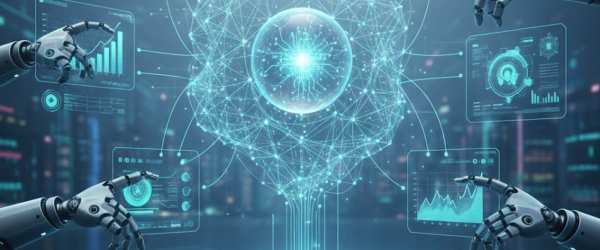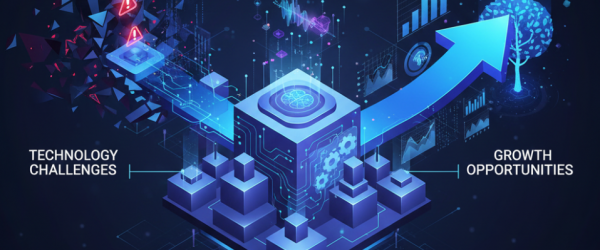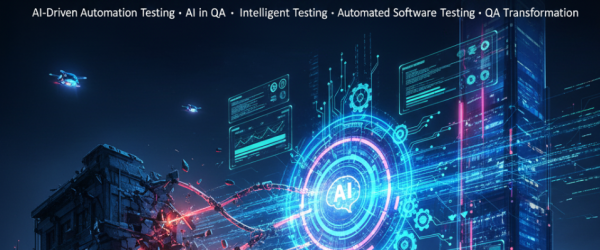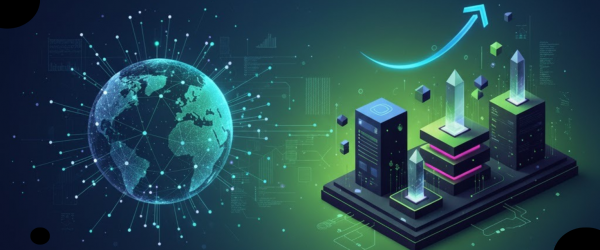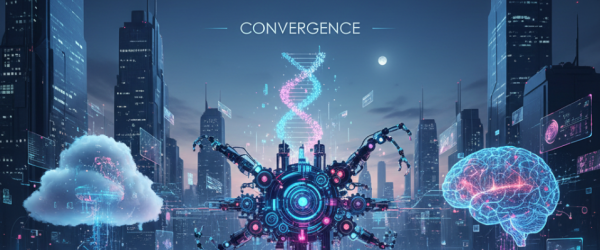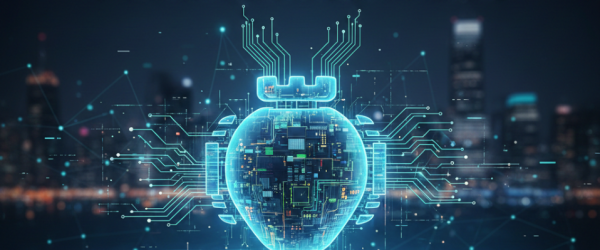Introduction
The cloud has evolved beyond being a mere repository for data and applications; it is now the computational backbone of the modern enterprise. As workloads become more complex-driven by Big Data, IoT, and, ironically, AI, the foundational challenge is no longer where to put the data, but how to manage the infrastructure dynamically, securely, and cost-efficiently.
The answer lies in the deep integration of Artificial Intelligence (AI) and Machine Learning (ML) directly into the fabric of cloud infrastructure. This integration marks the shift from a conventional cloud to a “smart cloud,” capable of self-optimization, predictive scaling, and autonomous defense. This isn’t just a future concept; it’s a rapidly accelerating market reality.
The Market Reality: Growth and Adoption
The convergence of AI and cloud is driving significant market expansion, underscoring the necessity of adopting these intelligent platforms.
- Massive Market Growth: The global cloud AI market is not just growing-it’s exploding. It was estimated at USD $87.27 billion in 2024 and is projected to reach USD $647.60 billion by 2030, reflecting an impressive Compound Annual Growth Rate (CAGR) of 39.7% from 2025 to 2030 (Grand View Research, 2025). This massive forecast indicates that AI-powered cloud solutions are quickly becoming the industry standard.
- The Go-To-Market for AI: A Deloitte study found that as early as 2024, 70% of companies acquired their AI capabilities through cloud-based software, while 65% created new AI applications using cloud services (Nutanix, 2024). The cloud is demonstrably the path of least resistance for AI adoption.
1. AI for Hyper-Scalability and Resource Optimization
Scalability in the cloud has traditionally been reactive (auto-scaling based on current demand). AI turns this into a proactive, predictive function, eliminating the waste and latency associated with guesswork.
Predictive Analytics for Demand Forecasting
Instead of simply reacting to an incoming traffic spike, AI models continuously analyze historical data, usage patterns, and external market trends to forecast demand fluctuations.
- Intelligent Workload Management: AI ensures that workloads are efficiently distributed across servers, data centers, and multi-cloud environments. By predicting peak and off-peak periods, the infrastructure automatically provisions resources before a spike hits and scales down during lulls. This proactive approach minimizes the risk of service disruption. A study on AI-based auto-scaling showed an improvement in resource utilization by 22% and a reduction in response time by 45% (ResearchGate, 2025).
- Cost Efficiency: For finance professionals and CIOs, this predictive power directly translates to reduced expenditure. AI-driven cost management tools have been shown to reduce cloud operational expenses by as much as 30% by eliminating over-provisioning (ResearchGate, 2025).
2. Fortifying the Perimeter: AI for Advanced Cloud Security
As enterprises move more sensitive data to the cloud, the attack surface expands. AI is no longer a security feature—it is the core mechanism for modern cloud defense. AI excels in tasks that overwhelm human security teams: processing vast logs, identifying minute anomalies, and responding in milliseconds.
Real-Time Anomaly Detection and Threat Mitigation
- Beyond Rule-Based Systems: Traditional security relies on known signatures and defined rules. AI, leveraging deep learning and machine learning algorithms, establishes a baseline of normal network traffic, user behavior, and system processes. It can then swiftly spot irregularities that may indicate a breach, such as unusual login attempts, unexpected data access patterns, or the execution of never-before-seen malware (Hyperstack, 2025).
- Reduced False Positives: The precision of AI-powered Intrusion Detection Systems (IDS) is critical. By learning from billions of data points, these systems can reduce false positives by up to 64%, allowing security teams to focus on legitimate, high-priority threats (ResearchGate, 2025).
- Adaptive Access Controls: AI is transforming identity and access management (IAM). Instead of static permissions, adaptive access controls powered by AI analyze real-time context—user location, device health, time of access, and behavioral biometrics—to dynamically adjust authentication requirements. If a user accesses data from an unfamiliar location, the AI can automatically trigger multi-factor authentication, effectively mitigating credential compromise (Hyperstack, 2025).
3. The Path to Self-Healing, Autonomous Clouds
The ultimate promise of AI integration is the realization of an autonomous, self-healing cloud ecosystem infrastructure that manages itself with minimal human intervention.
AI-powered orchestration frameworks are already capable of:
- Self-Healing: Continuously monitoring cloud components, detecting system failures (from simple hardware issues to software bugs), and initiating self-recovery processes without requiring human intervention (ResearchGate, 2025). This dramatically improves system reliability and reduces costly downtime.
- Automated MLOps: For engineers and data scientists, the cloud provides the computational horsepower (like GPUs and TPUs) needed for AI development. AI then automates the entire MLOps lifecycle—from data preparation and model training to deployment monitoring and version control, making the process faster and less error-prone (MarketsandMarkets, 2024).
Conclusion
The cloud is no longer a passive utility; it is a highly intelligent, constantly learning entity. Integrating AI and ML is not an optional upgrade but a fundamental requirement for any organization aiming for true enterprise-grade scalability and robust, anticipatory security. As technology leaders continue to drive this convergence, the market for AI cloud solutions is set to soar, cementing its status as the most critical infrastructure trend of the decade.


